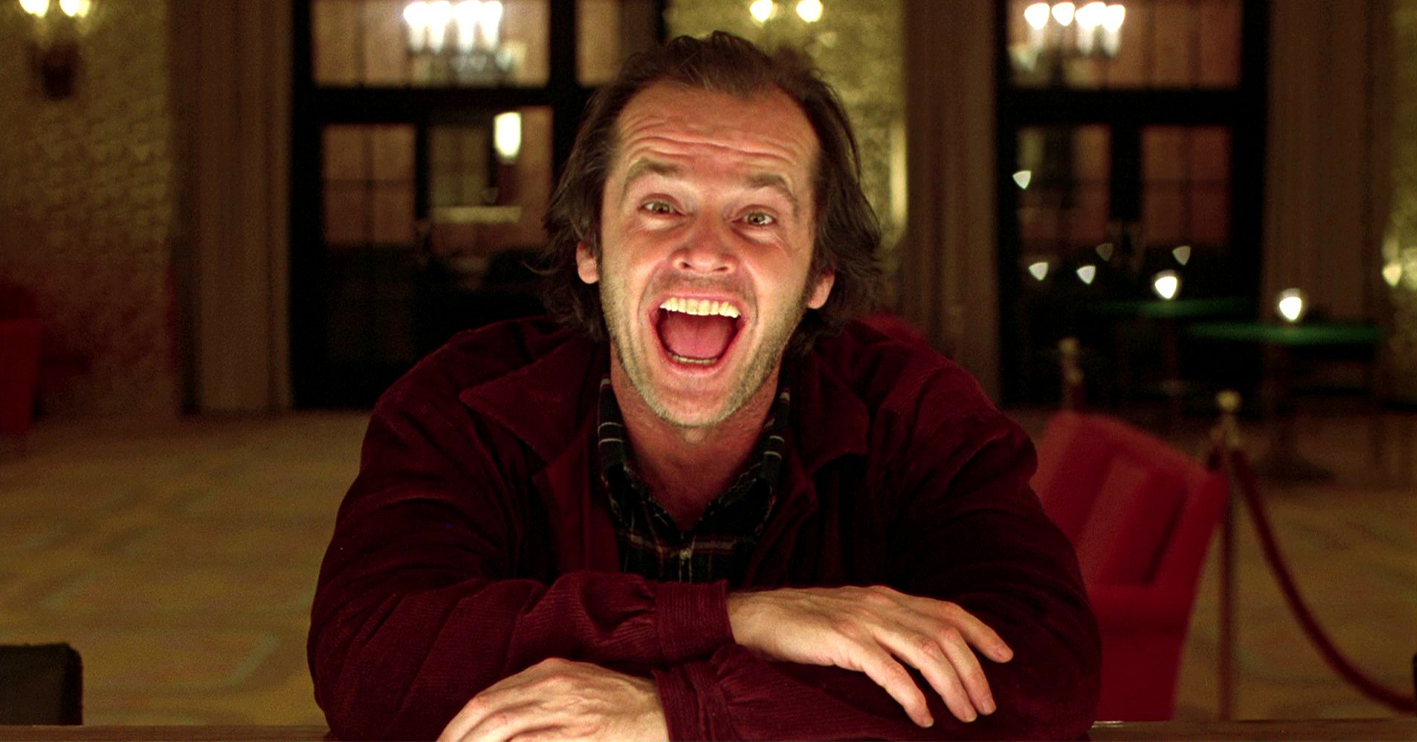The Shining really shouldn’t be as scary as it is. Think about it for a minute: it’s almost entirely set in daylight, has no jump scares, and relays largely on the performances of its actors rather than focusing on cheap thrills or scary monsters.
But scary The Shining certainly is, getting under our skin like few movies have before or since, and somehow always offering something new, even when you’ve watched it multiple times. The story behind legendary director Stanley Kubrick’s 1980 chiller is almost as interesting as the movie itself, so it’s with that in mind that we present the following 20 facts about the making of a true horror classic.
20. Robin Williams was considered to play Jack Torrance

Although Jack Nicholson was always Kubrick’s first choice for the role of Jack Torrance, other actors were considered.
[rtk_adunit_top]
Another actor considered for The Shining’s male lead was Robert De Niro – who would instead make Raging Bull with Martin Scorsese that year, ultimately earning himself a Best Actor Oscar.
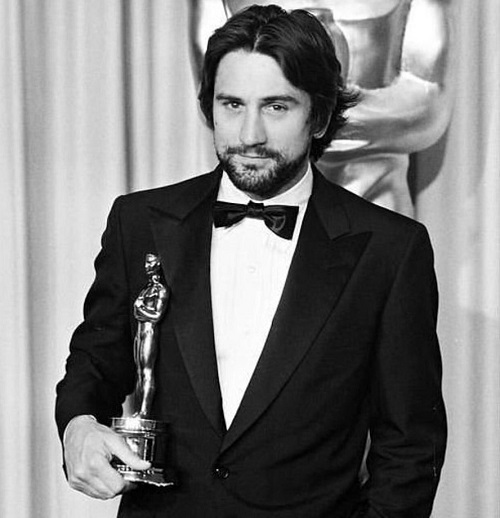
Harrison Ford and Robin Williams were also considered to play Jack, but Stephen King did not agree with the casting of either actor.
[rtk_adunit_middle]
1980 would see Ford make The Empire Strikes Back, whilst Williams worked on Popeye and his TV sitcom Mork & Mindy.
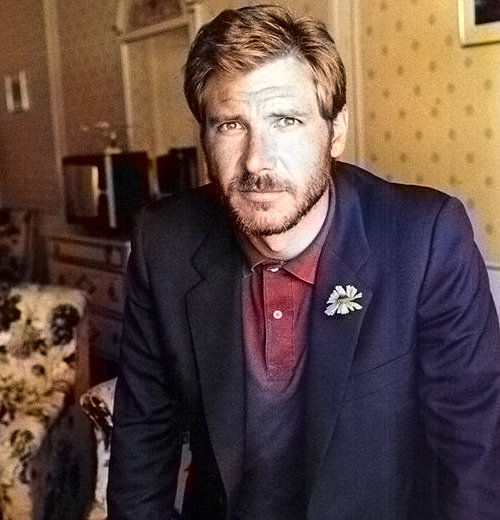
De Niro, who would later venture into horror territory with 1990’s Cape Fear, has been quoted as saying that when he ultimately saw The Shining, it gave him nightmares for months.
[rtk_adunit_bottom]
19. Some believe the film proves Stanley Kubrick faked the Moon landing

Conspiracy theorists have for years been claiming that the momentous moon landing of 1969 was faked by NASA.
[rtk_adunit_top]
Such people also claim that the footage was actually filmed on a sound stage by, yes you’ve guessed it, Stanley Kubrick.

Wild claims have also been made that Kubrick used The Shining to subtly confess to having done just this.
[rtk_adunit_middle]
For one, in one scene we see Danny prominently wearing a hand-knitted sweater which depicts the Apollo 11 rocket.
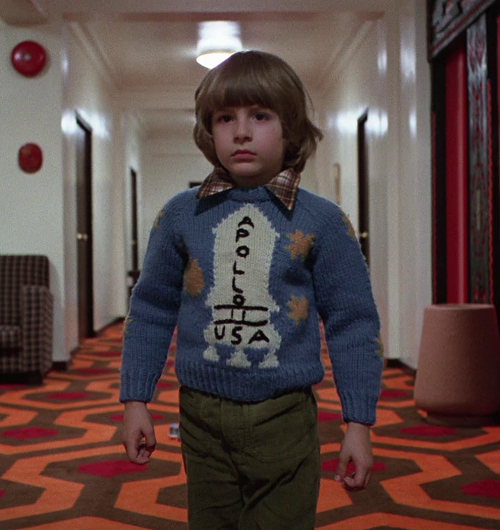
Also, the number of the movie’s haunted room was changed from 217 in the novel to 237 in the movie – and there are approximately 237,000 miles between Earth and the Moon. Coincidence?!
[rtk_adunit_bottom]
18. Shelley Duvall was so stressed shooting the film that her hair started to fall out

It might have been a tremendous opportunity to work on a major project with one of the true great directors, but The Shining proved to be a hugely stressful experience for its cast.
[rtk_adunit_top]
The actor who struggled the most was Shelley Duvall, who did not have a good working relationship with the extremely demanding Stanley Kubrick.

Duvall later recalled, “I was really in and out of ill health because the stress of the role was so great.”
[rtk_adunit_middle]
The actor continued, “Stanley pushed me and prodded me further than I’ve ever been pushed before. It’s the most difficult role I’ve ever had to play.”
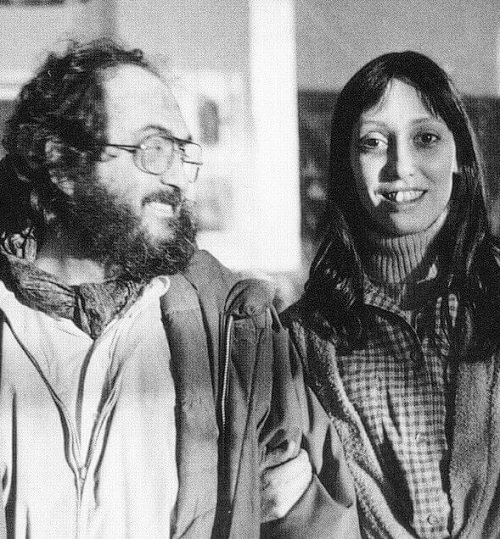
Duvall eventually became so overwhelmed that not only did she become very ill during the film’s shoot, but her hair even began to fall out.
[rtk_adunit_bottom]
17. Stephen King wrote a screenplay, but Kubrick didn’t even look at it
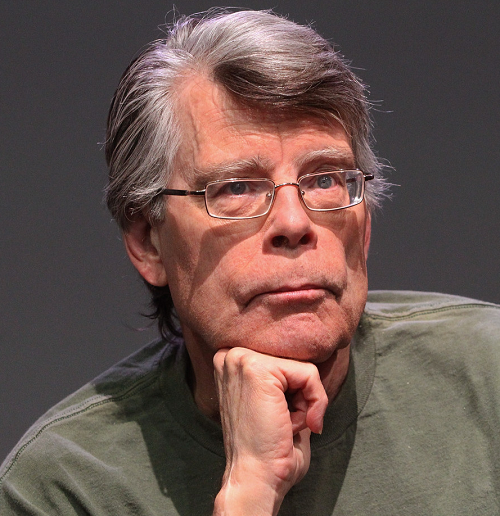
When Stanley Kubrick decided to make a movie of Stephen King’s 1977 novel The Shining, King was already quite well known, but not yet the literary giant he would become.
[rtk_adunit_top]
The author would later write a number of screen adaptations of his novels, as well as several original screenplays.
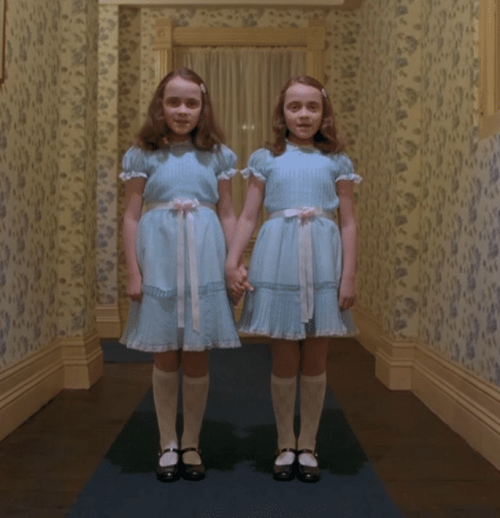
King had hoped to make his first move into film writing on The Shining, and wrote a screenplay adaptation especially.
[rtk_adunit_middle]
However, Kubrick didn’t even read King’s script, as he wasn’t too impressed with the author’s style; instead Kubrick worked with writer Diane Johnson on a screenplay of their own, which left out vast swathes of King’s story.
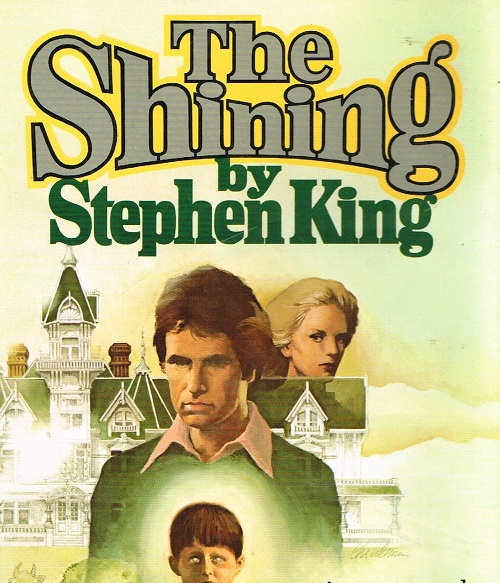
King wasn’t best pleased with this (more on that later), but the author would later provide the screenplay for a 1997 TV adaptation of The Shining that was far closer to his own book.
[rtk_adunit_bottom]
16. Danny Lloyd didn’t know he was making a horror movie

The Shining wound up being the only film made by child actor Danny Lloyd, who was chosen to play Danny Torrance after an extensive search.
[rtk_adunit_top]
However, as Lloyd was only five years old when the film was shot, Kubrick insisted they go to lengths to shelter the child from the film’s dark nature.
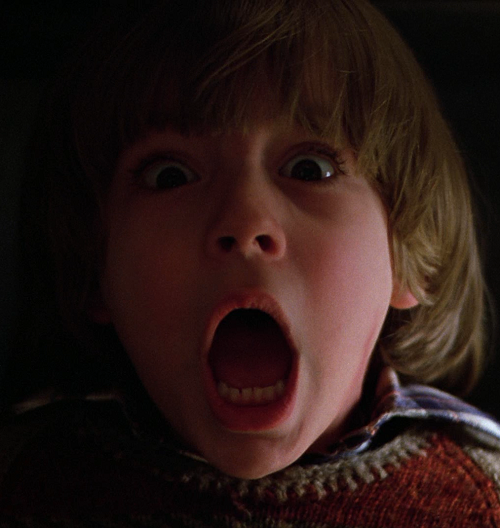
As such, Lloyd was simply told The Shining was a drama, and was kept in the dark about its more sinister elements.
[rtk_adunit_middle]
Lloyd ultimately didn’t see the film until he was 16, by which time he had already left acting behind.

Lloyd has only one other feature film credit on his CV: a cameo in Doctor Sleep, the 2019 sequel to The Shining.
[rtk_adunit_bottom]
15. Jack Nicholson learned his lines minutes before shooting takes
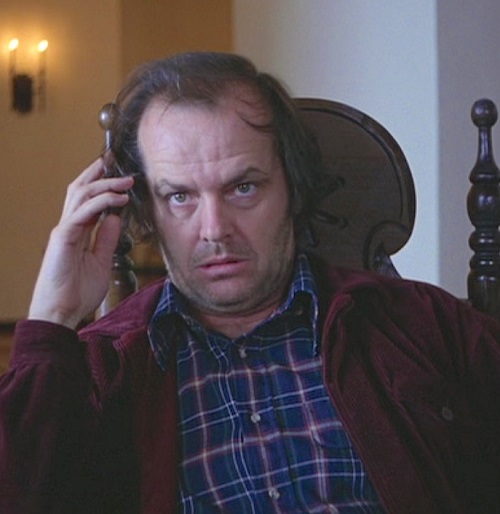
Throughout shooting, The Shining’s script was constantly being changed and tweaked, sometimes several times a day.
[rtk_adunit_top]
Unsurprisingly, this became the cause of much frustration for lead actors Jack Nicholson and Shelley Duvall.

Nicholson eventually became so annoyed that he would throw away the scripts he was being given to memorise.
[rtk_adunit_middle]
His rationale was that the script was almost certainly going to be changed by the time that the scene went before cameras.

As such, Nicholson would instead learn his lines mere minutes before he was due on set to shoot them (and given the number of takes Kubrick insisted on, Nicholson would have had them down no problem soon enough).
[rtk_adunit_bottom]
14. The typewriter scene was filmed in different languages for different audiences
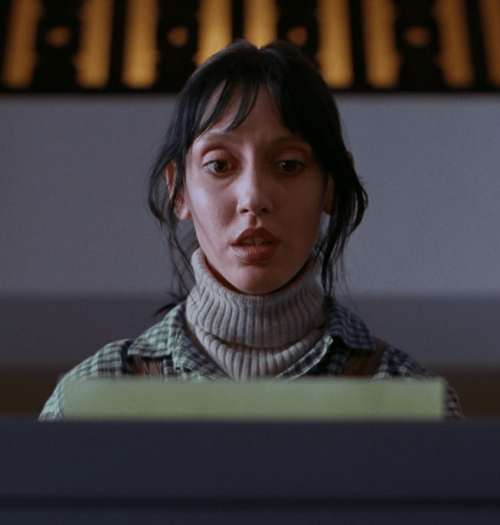
One particularly chilling moment in The Shining comes when Wendy approaches the vacant typewriter and looks at what her husband has been typing.
[rtk_adunit_top]
As viewers of the film will recall, the pages Jack has been typing are all filled with one phrase typed on seemingly infinite repetition: ‘All work and no play makes Jack a dull boy.’

Interestingly, Kubrick shot different takes of Wendy reading the pages in different languages for international releases of the film, while entirely different phrases were used for different countries.
[rtk_adunit_middle]
For example, in German the pages read ‘Was du heute kannst besorgen, das verschiebe nicht auf morgen’ (‘Never put off till tomorrow what may be done today’).

Meanwhile, in the Italian cut of The Shining the pages read ‘Il mattino ha l’oro in bocca’ (‘The morning has gold in its mouth’).
[rtk_adunit_bottom]
13. Jack Nicholson ad-libbed the “Heeeere’s Johnny!” line
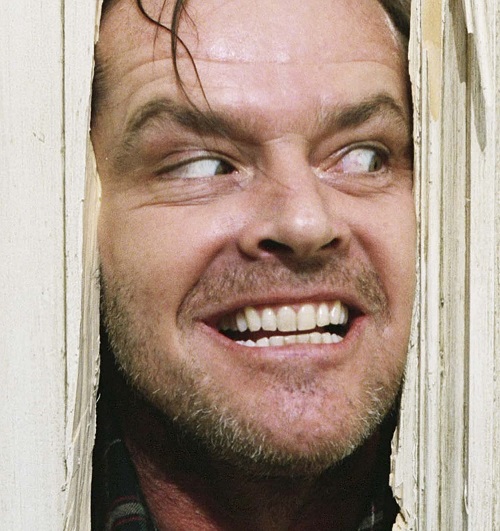
Ask anyone to name one scene from The Shining, and the most likely answer will be the scene when Jack Nicholson hacks through the door with an axe.
[rtk_adunit_top]
Whether you’ve seen the whole film or not, surely everybody knows that when Nicholson’s face appears at the newly-chopped hole in the door, he smiles maniacally and roars, “Heeeere’s Johnny!”

However, you might not have known what the line means – or that it was entirely an improvisation on Nicholson’s part.
[rtk_adunit_middle]
Unusually for the fastidious Kubrick, the director allowed Nicholson to ad-lib in this scene, trying different lines – and ultimately recognising that “Heeeere’s Johnny!” was the scariest of the bunch.
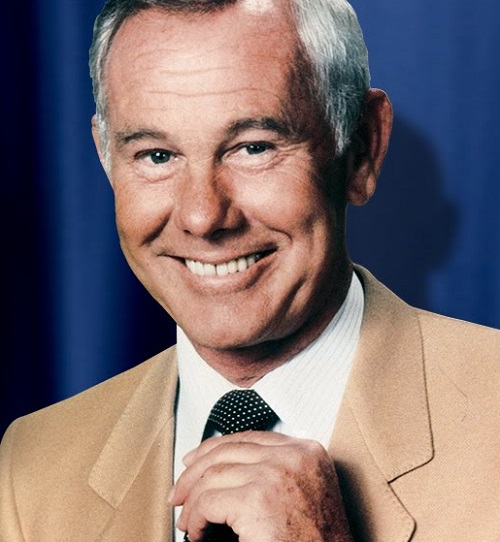
Nicholson was quoting the line used to introduce Johnny Carson, who was the long-standing host of TV’s The Tonight Show at the time.
[rtk_adunit_bottom]
12. Jack Nicholson also wrote the scene in which Wendy interrupts his writing

Another of the most unsettling scenes in The Shining, when Wendy casually interrupts Jack while he’s writing, was also a Nicholson brainchild.
[rtk_adunit_top]
Nicholson explains, “that’s the one scene in the movie I wrote myself” – and he did so drawing on real-life experience from his younger days as a struggling actor and screenwriter.
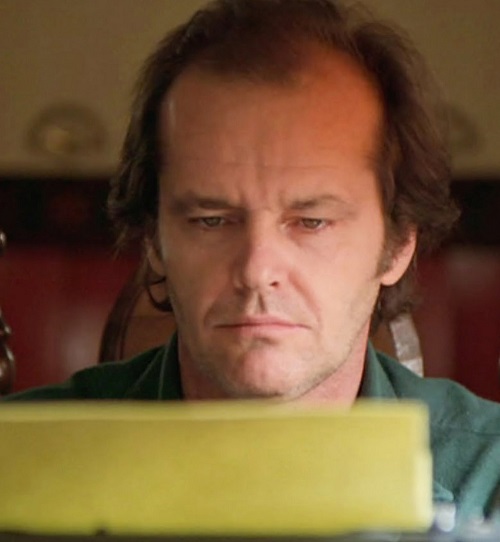
The actor says, “That scene at the typewriter – that’s what I was like when I got my divorce. I was under the pressure of being a family man with a daughter, and one day I accepted a job to act in a movie in the daytime and I was writing a movie at night.”
[rtk_adunit_middle]
On the night in question, Nicholson was sat “back in my little corner and my beloved wife Sandra, walked in on what was unbeknownst to her, this maniac.”

The actor told Stanley Kubrick about this incident and they together wrote it into the film.
[rtk_adunit_bottom]
11. Stanley Kubrick chose the project after reading ‘stacks’ of horror novels
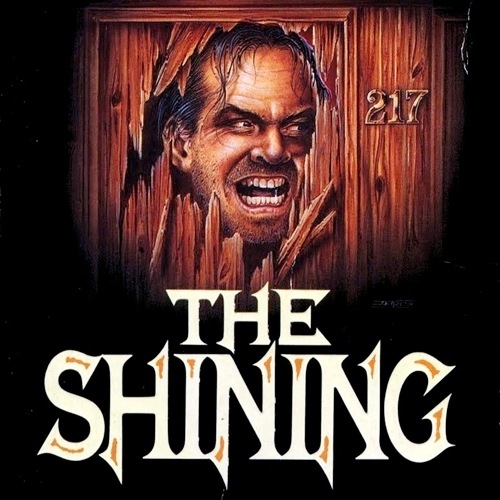
Director Stanley Kubrick decided he wanted to make a commercially-viable horror film following the under-performance of his previous film, 1975’s Barry Lyndon.
[rtk_adunit_top]
Stephen King was still an up-and-coming horror author at the time, and his books Carrie and Salem’s Lot had already been adapted for the screen.

King (above) says that Kubrick (below) chose to adapt his 1977 novel The Shining after reading through “stacks” of horror books.
[rtk_adunit_middle]
According to King, “Kubrick’s secretary heard the sound of each book hitting the wall as the director flung it into a reject pile after reading the first few pages,” but the director wound up “deeply engrossed” once he started reading The Shining.
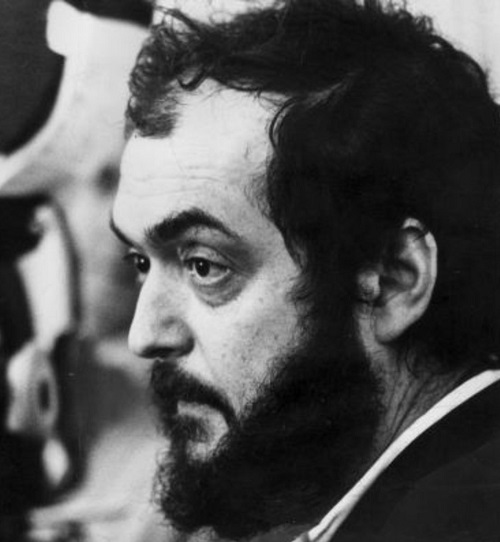
In the years that followed, King would enjoy a very close relationship with Hollywood; to date there have been at least 50 films based on his work, as well as 25 TV adaptations.
[rtk_adunit_bottom]
10. The staircase scene made the Guinness Book of Records for the number of takes shot

Stanley Kubrick was well known – infamous, even – for pushing his stars to their limits, and beyond.
[rtk_adunit_top]
The director routinely asked his actors to perform multiple takes so that he might find the exact performance he was after.
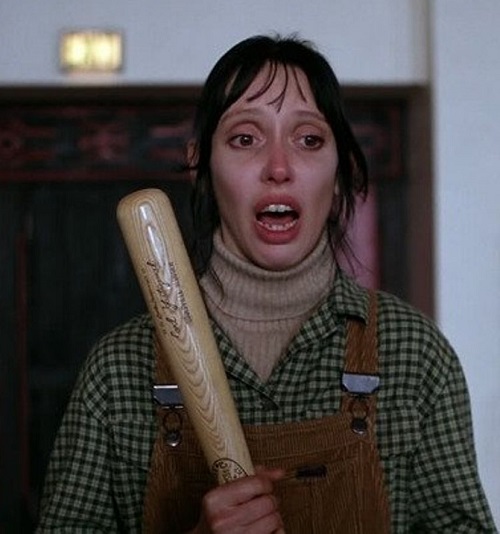
Kubrick’s reputation for such painstaking perfectionism only intensified further when he was shooting The Shining.
[rtk_adunit_middle]
One specific scene – the moment when Jack threateningly approaches Wendy on the stairs, and she fends him off with a baseball bat – became a record-breaker for this reason.

Kubrick had Nicholson and Duvall act out this scene on camera 127 times: the highest number of takes ever recorded for a scene with dialogue.
[rtk_adunit_bottom]
9. Kubrick’s daughter and wife respectively had a hand in the film’s music and design
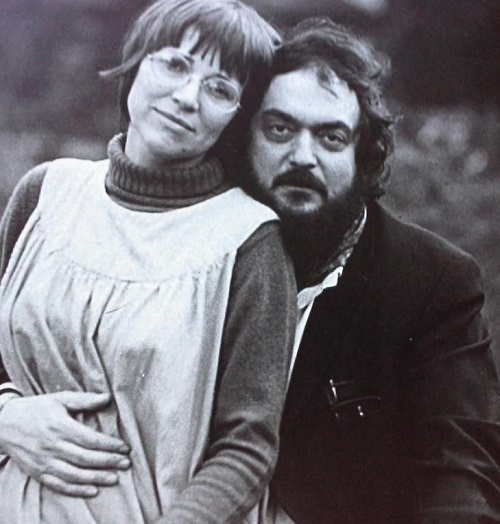
Particularly in his later years, Kubrick was notoriously reclusive, and made a point of surrounding himself with only people he trusted.
[rtk_adunit_top]
This meant that his films often wound up being largely family affairs – and this was very much the case on The Shining.

Two of Kubrick’s closest collaborators on The Shining were his wife Christiane, and their daughter Vivian.
[rtk_adunit_middle]
Both Christiane and Vivian Kubrick had a hand in the film’s music and design (although they did not receive credit), whilst Vivian also directed behind-the-scenes documentary Making The Shining – a role she would repeat on her father’s next film, Full Metal Jacket.

Meanwhile, The Shining’s executive producer was Jan Harlan, who was also the director’s brother-in-law.
[rtk_adunit_bottom]
8. Jack Nicholson chopped down a real door for the “Heeeere’s Johnny!” scene

The fact that Nicholson ad-libbed “Heeeere’s Johnny!” isn’t the only interesting fact about the scene when Jack hacks through the door with an axe.
[rtk_adunit_top]
What with it being only a movie, you may have assumed Nicholson was hacking at a fake door with a fake axe.
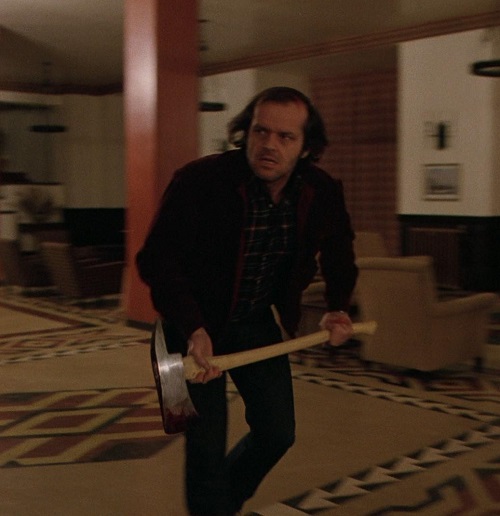
However, in this case quite the opposite is true: both the axe and the door were absolutely real.
[rtk_adunit_middle]
The Shining production team had already tried shooting the scene with a fake door, but the results did not meet with Kubrick’s satisfaction.
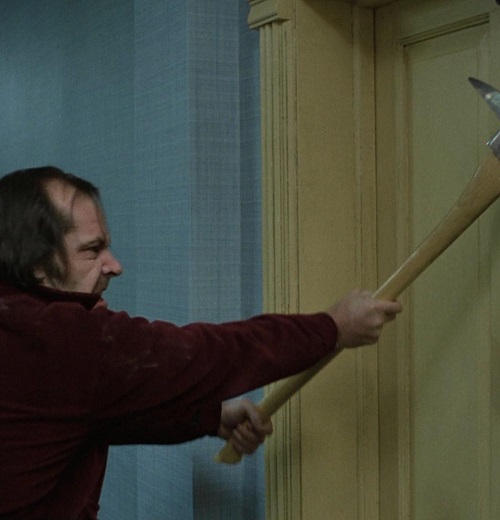
The problem was that Nicholson, who had previously worked as a volunteer firefighter, chopped through the fake door far too quickly. Kubrick asked his star to chop through a real door instead.
[rtk_adunit_bottom]
7. A fire destroyed most of the studio set near the end of production

At one point, production on The Shining was almost derailed when a fire broke out on the set.
[rtk_adunit_top]
In February 1979, the set at London’s Elstree Studios caught ablaze, spreading through a third of the studio.

This resulted in the total destruction of two of the complex’s soundstages, which were later rebuilt at a cost of $2.5 million.
[rtk_adunit_middle]
The cause of the fire was never fully ascertained – but, judging from a famous image of Kubrick laughing at the sight of the wreckage, the director appreciated the irony.
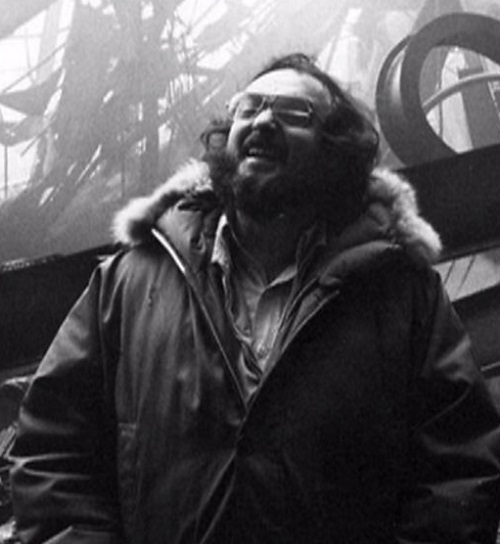
This was because, in Stephen King’s original ending (which the film discarded), the Overlook Hotel is burned to the ground.
[rtk_adunit_bottom]
6. Discarded footage from the film was later used in the ending of Blade Runner

Two years after The Shining, studio Warner Bros released another future cult classic which had a troubled production: Blade Runner.
[rtk_adunit_top]
Director Ridley Scott’s expensive sci-fi thriller had scored badly with test audiences, and the studio insisted on tacking on a happy ending.
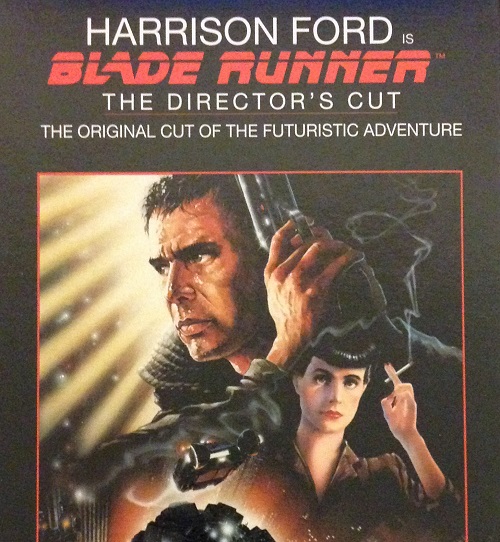
As such, the final scene of Blade Runner’s original 1982 theatrical version sees Harrison Ford’s Deckard and Sean Young’s Rachael driving a car through the countryside.
[rtk_adunit_middle]
Many of the shots, filmed over Wild Goose Island in Glacier National Park, Montana, are actually unused pieces of helicopter footage from the opening of The Shining.

The subsequent re-edited versions of Blade Runner (including the 1992 director’s cut, and 2007 ‘final cut’) omit this sequence in favour of Scott’s preferred, more ambiguous ending.
[rtk_adunit_bottom]
5. Stephen King hates the film

Around the time of the film’s release and in the decades since, the most vocal opponent of Stanley Kubrick’s The Shining has been the original novel’s author, Stephen King.
[rtk_adunit_top]
King has slammed Kubrick’s work as “too cold,” unhappy not only with how much of the novel’s plot the film discarded, but also its treatment of the characters.

King considers how Kubrick presents Shelley Duvall’s Wendy as “insulting to women… one of the most misogynistic characters ever put on film.”
[rtk_adunit_middle]
Of Jack Nicholson’s performance, King felt there was no sense of downward spiral, as Nicholson’s Jack Torrance seems “crazy (to begin with). So where is the tragedy if the guy shows up… and he’s already bonkers?”

King’s dissatisfaction with Kubrick’s film resulted in him taking a more hands-on approach with the 1997 TV mini-series adaptation of The Shining, directed by Mick Garris. Unlike Kubrick’s Shining, this version has not enjoyed popular acclaim.
[rtk_adunit_bottom]
4. King’s hatred of the film inspired a sequence in Ready Player One

Steven Spielberg was a huge admirer and good friend of Stanley Kubrick, to such an extent that he shot Kubrick’s unrealised project AI: Artificial Intelligence not long after the iconic director’s death.
[rtk_adunit_top]
In his 2018 film Ready Player One, Spielberg seized the opportunity to pay tribute to Kubrick once again, by re-creating key sequences from The Shining.

Adapted from Ernest Cline’s sci-fi adventure novel, Ready Player One is set in a virtual reality gaming community in which players recreate their pop culture obsessions – including classic movies.
[rtk_adunit_middle]
The story follows a central group of players in search of three highly coveted keys, and one sequence (not included in the original book) sees the players enter a virtual recreation of The Shining in order to find one.

The players are brought to The Shining by a clue, “a creator who hates his own creation” – which they realise refers to Stephen King’s hatred of Stanley Kubrick’s movie.
[rtk_adunit_bottom]
3. Critics hated the film at first
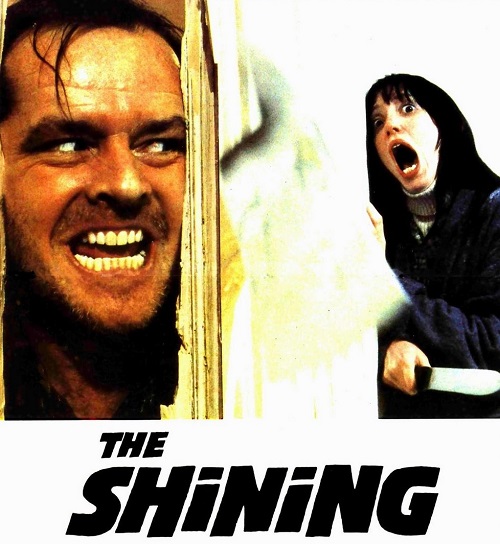
Stephen King isn’t the only one who has expressed displeasure with how Stanley Kubrick’s take on The Shining turned out.
[rtk_adunit_top]
On the film’s initial release in 1980, the critics were not particularly kind to the film either.

For example, Variety’s review stated that “with everything to work with, Kubrick has teamed with jumpy Jack Nicholson to destroy all that was so terrifying about Stephen King’s bestseller.”
[rtk_adunit_middle]
The Shining also wound up one of the few Kubrick films to receive no nominations whatsoever at the Oscars or Golden Globes – although it did land Razzie Award nominations for Kubrick as Worst Director, and Shelley Duvall as Worst Actress.

Of course, it didn’t take long for The Shining to be re-assessed, and decades later it is regarded as one of the greatest horror movies of all time.
[rtk_adunit_bottom]
2. Room 217 was changed to Room 237 at the request of the real hotel
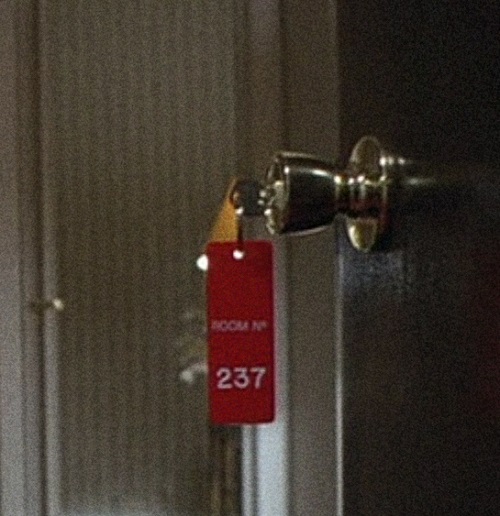
The truth behind The Shining’s haunted hotel room being changed from 217 to 237 is far more mundane than the Moon landing conspiracy theorists might like to believe.
[rtk_adunit_top]
Though all the interior scenes of The Shining were shot in London, some exterior shots were shot on location at a real hotel, the Timberline Lodge in Oregon.
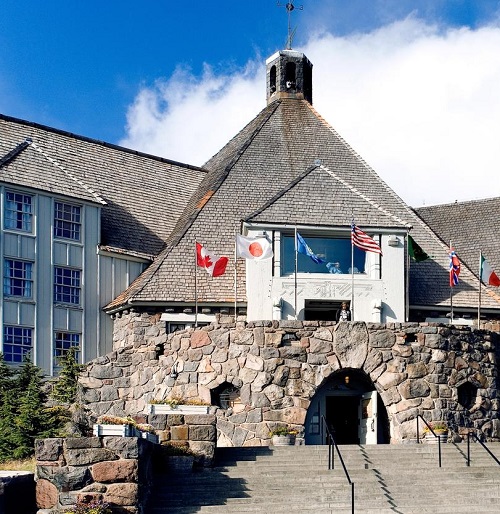
The hotel was concerned about any adverse effect on business, so they requested the movie use a non-existent room as its centre of sinister supernatural goings-on.
[rtk_adunit_middle]
As such, the filmmakers made it Room 237, as no such room actually exists in the Timberline Lodge.
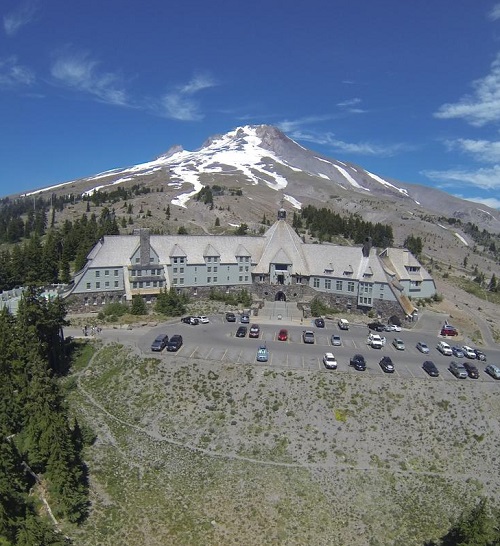
In the years since The Shining was shot there, visitors to the Timberline Lodge have frequently requested to stay in room 217.
[rtk_adunit_bottom]
1. A sequel to the film hit cinemas in 2019

In 2013, Stephen King wrote a sequel to his original novel The Shining, entitled Doctor Sleep.
[rtk_adunit_top]
Then in November 2019, a movie adaptation of Doctor Sleep arrived in cinemas, directed by Mike Flanagan (who previously made King adaptation Gerald’s Game for Netflix).
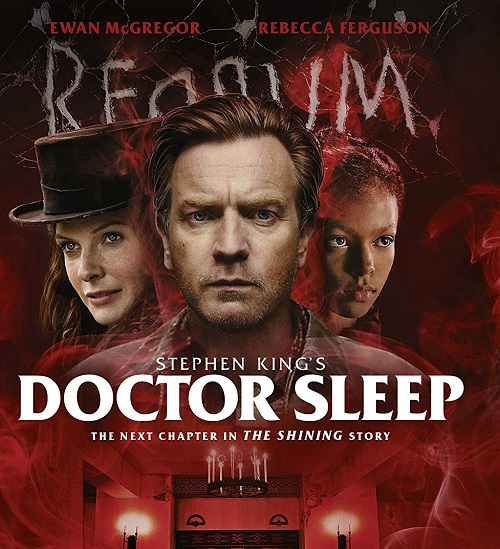
The story centres on the struggles of a now-adult Danny Torrance, portrayed in the film by Ewan McGregor.
[rtk_adunit_middle]
Doctor Sleep went down reasonably well with critics, although as pointed out by Rogerebert.com, it tries to be “a sequel to a film that stays loyal to a book that ignores the changes made in the first movie. That ain’t easy.”
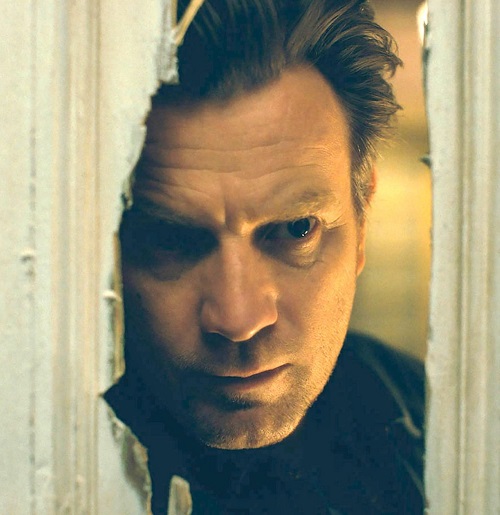
Audiences weren’t quite so interested, unfortunately, and Doctor Sleep wound up making only $72.3 million from its theatrical run.
[rtk_adunit_end]

